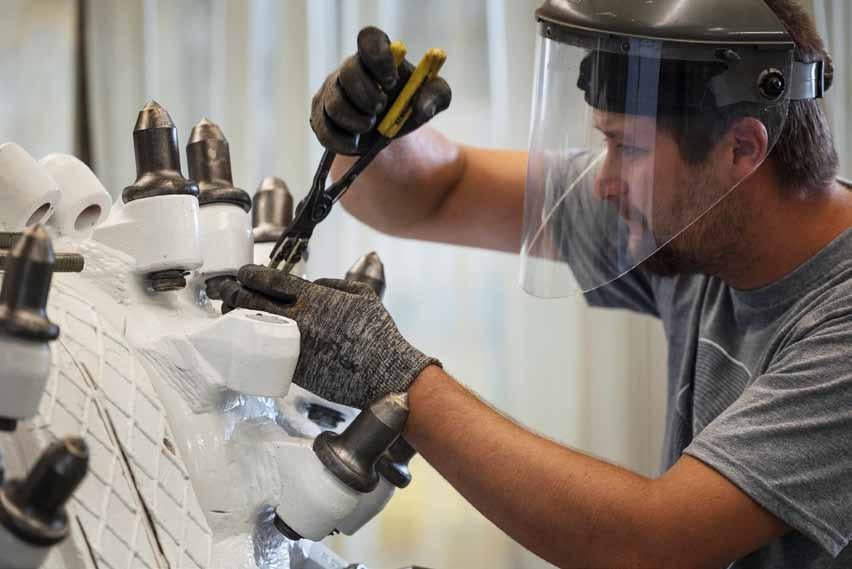
2 minute read
Geosynthetics in mining
By Eric Lamontagne, P.Eng., GE Environmental Solutions Inc.
Geosynthetics in mining has been around for decades. How we use them in different markets is still an avenue for innovation. Each mine site, minerals for example, present their own challenges. These challenges can be ground stabilization, water quality, containment, and other geotechnical obstacles. An entire catalogue can be created with the many products and their capabilities in providing geotechnical solutions.
Geotechnical solutions are closely tied to ESG metrics that are keenly being developed by resource companies. How does ESG work? How does geosynthetics affect these metrics?
“Geosynthetics, in general, are not fully understood,” says GE president Eric Lamontagne. “Education will continue to play a pivotal role as the industry evolves and we design and build infrastructure with geosynthetics.”
Lamontagne goes on to explain how geosynthetics have been applied to construction since the early 1960s. However, education around product diversity and variety are not as widely understood which can sometimes impede the design process. GE’s strength comes from the unbiased approach of designing with geosynthetics. “As a team, we discuss the best approach for each project, and which product(s) are best suited for the application. We also support the quality of installation to ensure the desired outcome is achieved,” he explains.

“In addition, with the use of geosynthetics, construction non-renewable resources such as aggregate can be reduced,” adds Lamontagne. Reducing these inputs can reduce cost and reduce carbon production from extraction, processing, and transportation. Water management is another key indicator that is high priority environmental reporting for mining companies. How the water is captured, stored, utilized, treated, and released is an opportunity for geosynthetics to support operations.
Erosion protection and prevention typically is included in geosynthetic discussions. One product that stands above the rest for hard armouring application is fabric formed concrete. What are some of the advantages of fabric formed concrete vs other hard armouring solutions?
“The main advantage comes in the form of the social key performance indicator. The grout mix is sourced from local producers and brought to the work site front,” he explains. The local economy that supports jobs and families that reside near a project. These companies in turn support local organizations including extracurricular activities for youth. Another advantage includes environmental and cost savings since finished products are not shipped from manufactures, the material is “cast in place”.
Technical advantages exist in the form of conforming directly to the subgrade. The material can be designed and manufactured for specific project configurations. There is also tensile and compressive strength improvements on the product once poured and cured.
Fabric formed concrete is one of many erosion control products that can be used in mining applications. Ensuring you have the right product for the right application is the key for success.










